Linalee |
|
| | 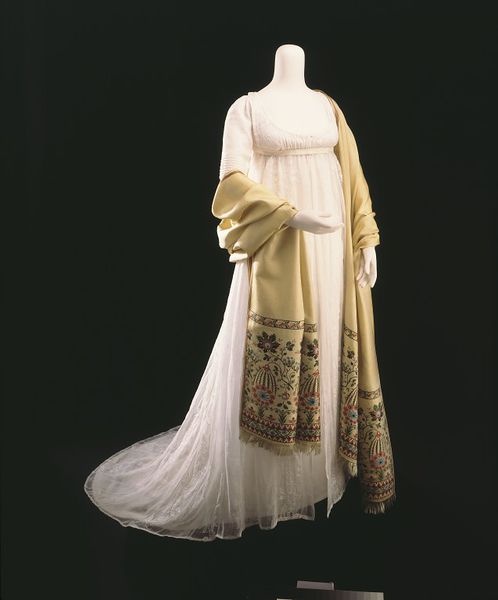
English gown, c. 1800.
source: victoria and albert museum
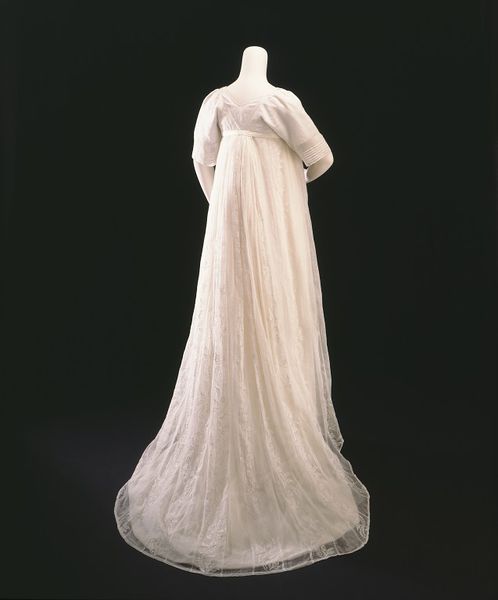
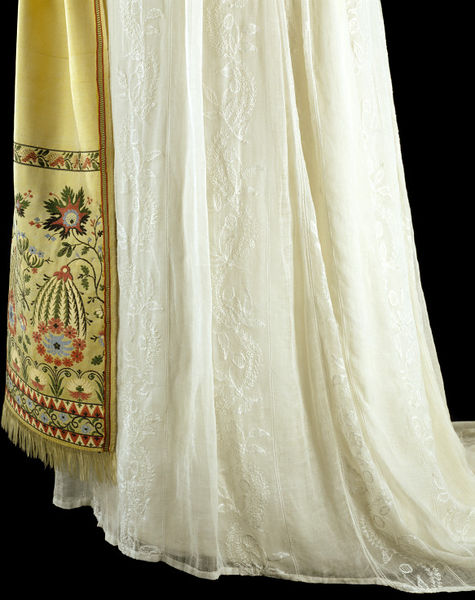
CITAZIONE Object Type
This gown is made of very fine muslin embroidered with a floral pattern. The sheer fabric did not offer much warmth, so these gowns were frequently worn under cashmere shawls draped over the shoulders and arms.
Historical Associations
The classical revival, which affected architecture from the 1760s and painting from the 1770s, made its mark on fashion rather later. Its influence on dress begins with the history paintings of the leading French Neo-classicist, Jacques-Louis David (1748-1825), and theatre costume for plays with plots based on events connected with ancient Rome and Greece. Sir Joshua Reynolds (1723-1792) popularised a particular type of artistic dress, mainly high-waisted, plain white gowns, in imitation of classical dress. Although in the 1770s these were seen only in portraits, they foreshadow the style of dress that women actually wore in the 1790s.
By the 1780s, a preference for white and more linear textile patterns became evident in women's fashion. However, the high waistline and skirts unsupported by hoops did not appear until 1795. There are other 'non-classical' sources for these changes in women's fashions, such as the chemise dress of the 1780s and the very plain style of dress worn by little girls from the 1760s onwards.
Place
India was the traditional source for the very fine cotton used in dress up to the early 19th century. Although Britain made great progress in the development of a native cotton manufacturing industry in the late 18th century, the delicately embroidered muslins were still imported from India.
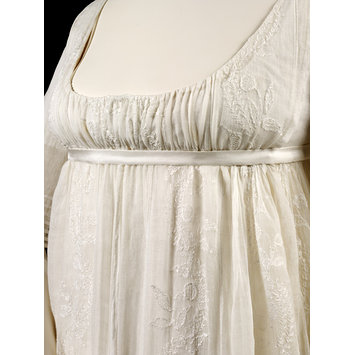 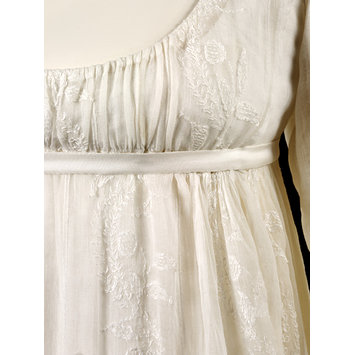
- Tags:
- 1800's,
- dresses,
- regency
|
|
| | |



